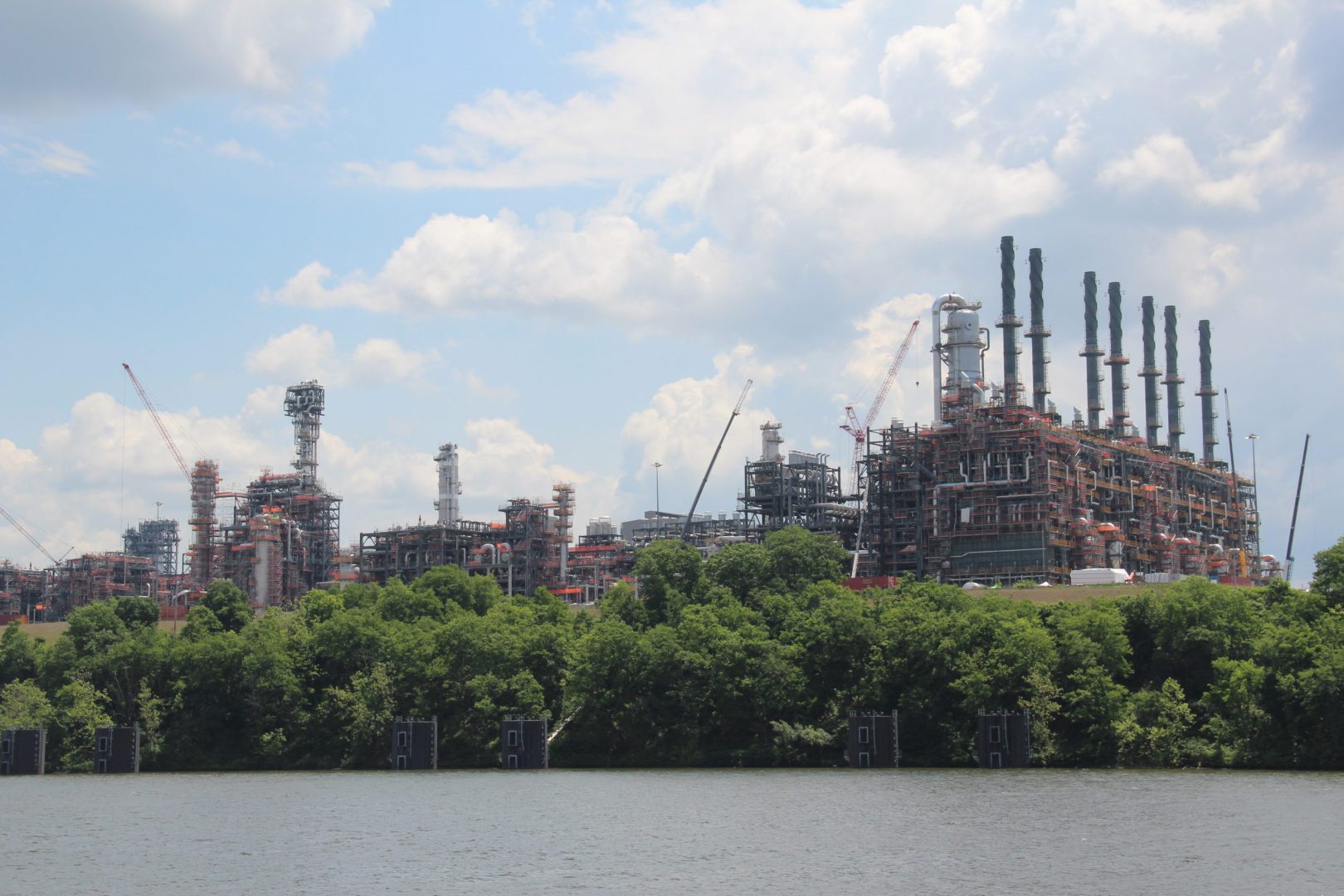
The Shell ethane cracker as it nears completion in June 2022.
Reid R. Frazier / StateImpact Pennsylvania


The Shell ethane cracker as it nears completion in June 2022.
Reid R. Frazier / StateImpact Pennsylvania

Reid R. Frazier / StateImpact Pennsylvania
The Shell ethane cracker as it nears completion in June 2022.
The Pennsylvania Department of Environmental Protection is investigating a release of odors from Shell’s Beaver County ethane cracker this week.
Shell reported on Facebook Wednesday the odor came from its wastewater treatment facility, and said the smell could be detected outside of the facility’s boundaries.
“Depending on wind direction, the odor was detected in certain areas offsite as well. We are working to resolve this matter as quickly as possible,” the company said.
Under the facility’s state air permit, the plant is not allowed to release “malodorous air contaminants” outside of the company’s property line.
Curtis Thomas, a spokesman for the company, said this happened after the company drained a tank for scheduled maintenance during a plant shutdown. As a result, he said, “a watery oil mix” entered the facility’s wastewater treatment plant, causing the release of odor. The company added water to the oily mix “with the goal of minimizing the odor,” Thomas said.
The area nearby was closed off, he said, “and normal work that would have been done in the area was paused.” Contrary to statements on social media, there was no plant-wide evacuation, and no release of the carcinogen benzene, Thomas said, in an email.
Lexy Stawick of the nearby town of Beaver said her 7-year-old daughter first smelled the odor when she went outside before school on Wednesday morning.
“She just went out in the backyard to get her shoes and she came in and told me it smells really bad outside,” Stawick said. “And she asked me to come outside to smell it, and it smelled like someone had come into our backyard and just like, doused it in gasoline. It reeked of gas.”
Rosemary Rush, of Brighton, said her 8-year-old son first alerted her to the smell when she rolled the windows down while driving him to school in Beaver Wednesday morning.
“He was like, ‘Mom, what is that smell? It smells so bad.’ And I didn’t really think anything of it at first, but we literally could not keep the window down,” she said. “I was like instantly nauseous, instantly had a headache.”
Rush said she drove to different spots in Beaver to see if the smell, which she described as “like burning gas and maple syrup mixed together” was still present, and it was.
“It was like this heavy, thick, almost like a cloud of something that I was breathing in that I could feel in my throat,” she said.
DEP spokeswoman Lauren Camarda said agency personnel were at the plant Wednesday and Thursday investigating after getting numerous reports from the public and from Shell about the event.
The DEP staff documented “on-and-offsite odors, which Shell reports were caused by oil entering its wastewater treatment plant,” Camarda said.
Camarda said Shell had reported higher than normal readings for volatile organic compounds (VOCs) at the company’s fence line air monitors, and that local ambient air pollution readings reported higher than normal levels of particulate matter. But Camarda said these levels did not exceed federal health-based air standards. Camarda said the agency “has no evidence to date of any unpermitted materials being discharged to a waterway” from the plant.
The event follows a rocky few months of operations at the plant, which began in November, and includes a state notice of violation in December for high levels of flaring during startup operations. Three other recent violations in April were for visible emissions from flaring in February; exceeding its 12-month limit of nitrogen oxide emissions in January; and exceeding its 12-month emissions limits of both nitrogen oxide and carbon monoxide emissions in February. In March, a compressor failure led to another bright flaring event at the plant.
Stawick said she is worried about the overall impact of the plant’s emissions on her children, 5 and 7.
“It seems like Shell is having an issue almost monthly. So I worry about what that’s doing to our air, what our kids are being exposed to,” she said.
The plant, which makes plastic out of ethane, a component of natural gas abundant in the Utica and Marcellus shale, opened in November and received a $1.65 billion Pennsylvania tax credit, the largest in state history.
StateImpact Pennsylvania is a collaboration among WITF, WHYY, and the Allegheny Front. Reporters Reid Frazier, Rachel McDevitt and Susan Phillips cover the commonwealth’s energy economy. Read their reports on this site, and hear them on public radio stations across Pennsylvania.
(listed by story count)
StateImpact Pennsylvania is a collaboration among WITF, WHYY, and the Allegheny Front. Reporters Reid Frazier, Rachel McDevitt and Susan Phillips cover the commonwealth’s energy economy. Read their reports on this site, and hear them on public radio stations across Pennsylvania.
Climate Solutions, a collaboration of news organizations, educational institutions and a theater company, uses engagement, education and storytelling to help central Pennsylvanians toward climate change literacy, resilience and adaptation. Our work will amplify how people are finding solutions to the challenges presented by a warming world.